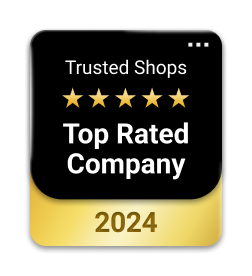Product details & mandatory information
Foot of the horse as a model in detail
Foot of the horse as a model - Model 1:
We present you with a model of a stallion's foot based on precise CT and MRI data and produced in life size. All anatomical structures are reproduced in detail thanks to 3D printing in different colours. The horn capsule can be purchased separately and attached to the model. A total of four models are available, from a complete anatomy with 25 coloured structures to reduced models in which deeper structures are visible.
Model 1 offers the following structures, among others:
- Pasternsnavicular ligaments
- Common toe extensor
- Side ligaments of the coffin joint
- Side ligaments of the fetlock joint
- Side ligaments of the coronet joint and the palmar coronet ligament
- Crossed equinus ligaments
- Deep flexor tendon
- Crown bone
- Crown bone
- Crown bone ligament
- Crown bone ligament
- Crown bone ligamentCoffin bone ligament (lig. impar)
- Horn capsule
- Crownbone
- Crownbone
- Axial palmar ligaments
- Pastern
- Scutum proximale
- Lig. palmar ligaments of the proximal pasterns
- Pasterns
- Superficial flexor tendon
- Short proximal pastern ligaments
- Pastern support (m. interosseus) and its supporting branches
- Similar ligament
This model allows you to take a detailed look at the various structures of the horse's foot and understand them better.
Horse's foot as a model - Model 2:
Our Model 2 is also based on accurate CT and MRI data and was produced at life size using 3D printing. It shows the same structures as Model 1, but without flexor tendons. This allows you to take a look at the proximal coffin bone ligaments, the navicular ligament (lig. impar) and the fetlock-pastern ligaments.
Foot of the horse as a model - Model 3:
Model 3 offers a similar representation to Model 1, but the deep flexor tendon is split sagittally to show it in relation to the coffin bones and the navicular ligament (lig. impar). In addition, the hoof cartilage is removed on one side in order to visualise the pastern-radial ligaments.
Model 1 (reduced):
This model offers an even more reduced representation and allows you to view the bones and joints together with the associated ligaments.
Model 1 (further reduced):
This model also gives you a clear view of the bones and joints as well as their ligaments. It is particularly suitable for studying these structures in more detail.
Ideally suited for
- Hospitals
- Healthcare centres
- Training facilities
- Research facilities
Advantages
- Model based on accurate CT and MRI data
- Life-size model
- Detailed representation of the anatomical structures

















